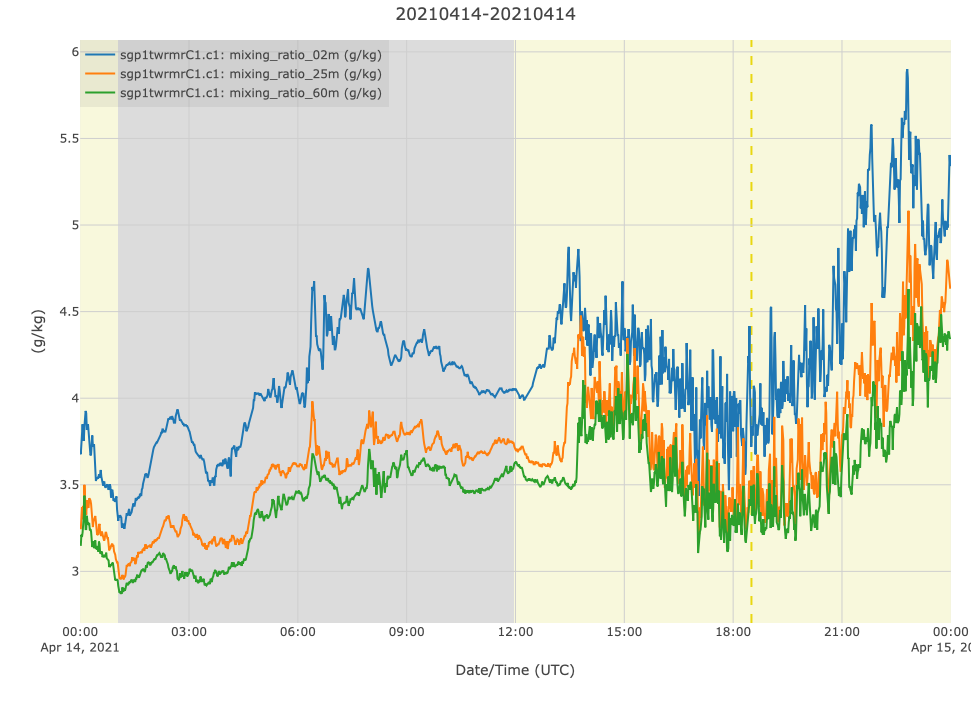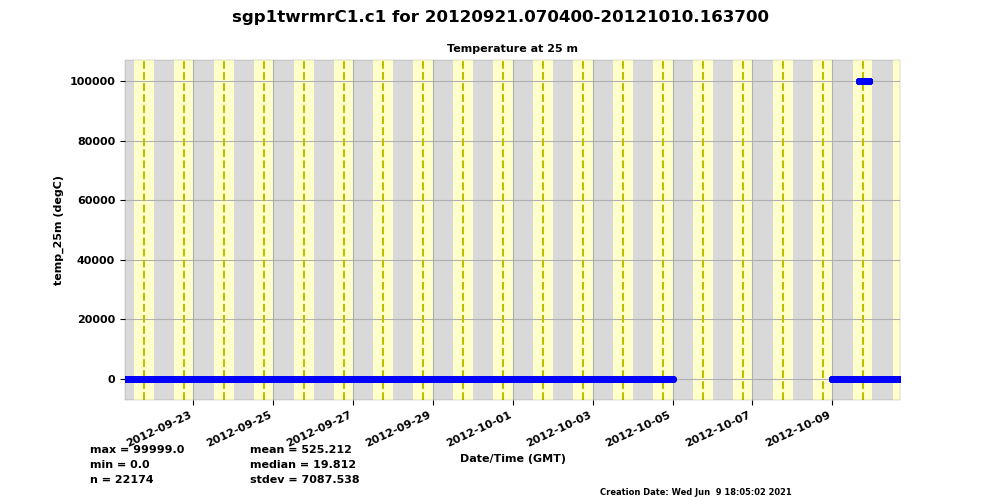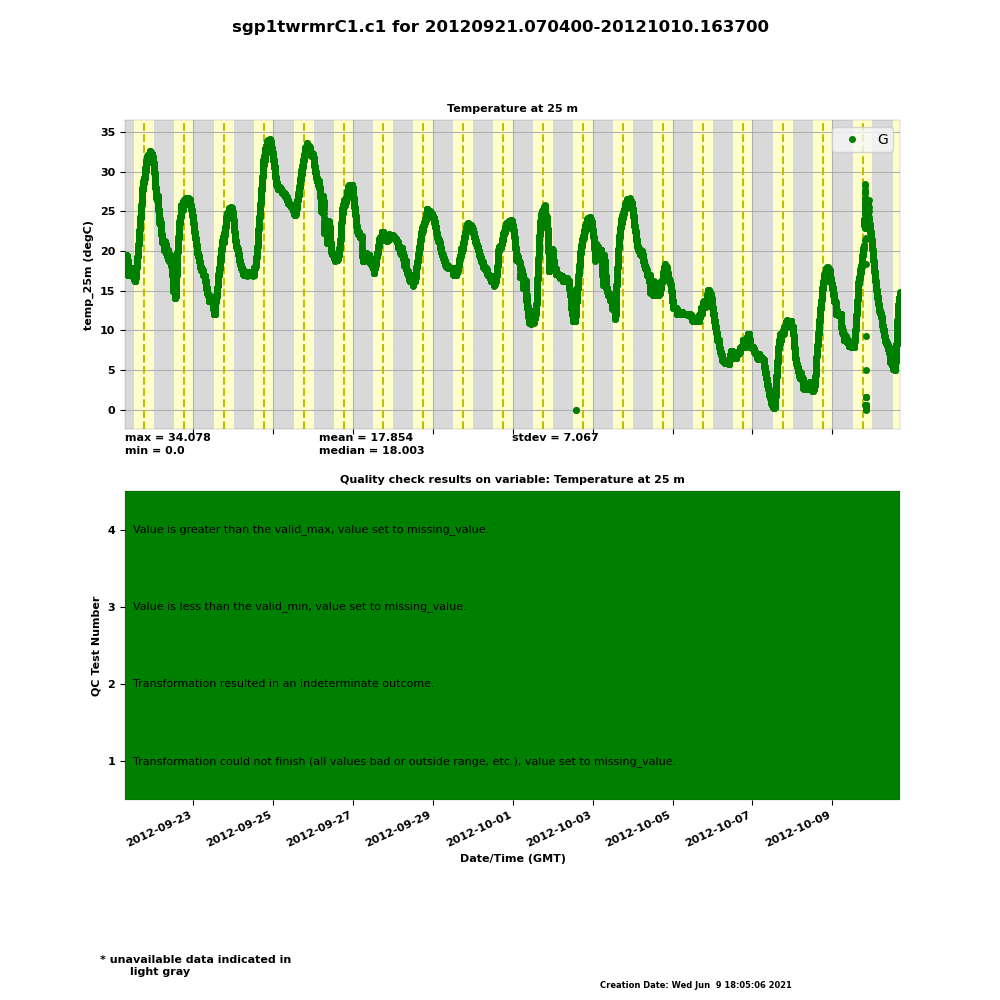Updated Tower Water-Vapor Mixing Ratio Product Now Available
Published: 21 July 2021
An updated version of the Tower Water-Vapor Mixing Ratio value-added product (TWRMR VAP) is now available for use. This VAP calculates water vapor mixing ratios at the 25- and 60-meter levels of the meteorological tower at the Atmospheric Radiation Measurement (ARM) user facility’s Southern Great Plains (SGP) Central Facility. TWRMR also provides best-estimate temperature, relative humidity, and pressure measurements at the 2-, 25-, and 60-meter levels.
This version of TWRMR incorporates software updates that support the addition of new instruments, removal of old instruments, and updates to existing instruments at the SGP Central Facility. From 2016 to 2019, ARM upgraded instruments there to provide more accurate temperature and humidity measurements and reduce water vapor biases.



In April 2019, ARM replaced the Central Facility tower’s temperature and humidity instruments with new instruments to ensure consistent measurement techniques between the west and southeast sides of the tower. The updated TWRMR supports the use of the TOWERMET input datastream, which provides temperature, humidity, and vapor pressure measurements from the 25- and 60-meter west and southeast elevators. This datastream started running April 25, 2019, and replaced three separate datastreams.
This version of TWRMR also supports the use of input data from the meteorological automatic weather station (MAWS), which provides meteorological measurements at ground level as a surface reference for the balloon-borne sounding system. The MAWS is used in place of the temperature, humidity, wind, and pressure system (THWAPS), retired in January 2016.
The following changes are also included in this version:
- source attributes added to data variables passed through from input datastreams
- data variables with names ending in “MET” (surface meteorological instrumentation) renamed to end in “preferred”
- data variables with names ending in “THWAPS” or “SMOS” (surface meteorological observation system, which became the MET system) renamed to end in “alternate”
- stricter limit checks added on pressure and temperature variables
- several global and variable-level attributes added or updated to meet the latest ARM data file standards.
The VAP is producing daily output files in 1-minute increments using the updated process. Daily output files are available from August 22, 2020, onward. This release ends a pause dating back to April 2019 on data released for this product.
To ensure that all TWRMR data conform with the latest ARM data file standards, data before August 22, 2020, have been reprocessed using the current version of TWRMR.
Scientists can use meteorological data from this VAP now.
For more information about TWRMR, go to the VAP web page.
How are you using the data, and how well are they working for you? To share your experience or ask questions, contact ARM translator Damao Zhang or developers Maxwell Levin or Krista Gaustad.
Access the data set in the ARM Data Center. (Go here to create an account to download the data.)
To cite the TWRMR data, please use doi:10.5439/1027267.
Keep up with the Atmospheric Observer
Updates on ARM news, events, and opportunities delivered to your inbox
ARM User Profile
ARM welcomes users from all institutions and nations. A free ARM user account is needed to access ARM data.


















